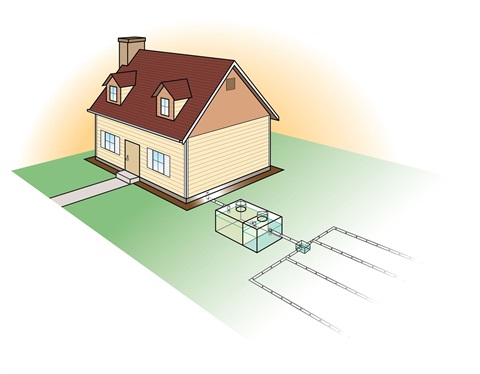Do you know where your poo goes?
Published on 24 July 2024

If you live in a rural area or a location not connected to the sewer main, you likely have an on-site sewage management system, such as a septic tank, an aerated wastewater treatment system (AWTS), or a composting toilet. Proper maintenance of these systems is crucial to prevent water pollution, health risks, unpleasant odours, and the attraction of vermin and insects.
NSW Health sets the design and structural requirements for single household treatment systems, while local councils are responsible for approving the installation of smaller domestic systems and land application areas. As a landholder and waste producer, it is your responsibility to understand your system, ensure it operates properly, and arrange regular maintenance.
Key responsibilities and maintenance tips
1. Understanding your system: learn how your sewage management system works and its maintenance needs. Knowing the location and layout is essential for effective management.
2. Regular inspections: Conduct visual checks to detect early signs of system failure, such as surface ponding, soil quality deterioration, poor vegetation growth, and unusual odours. Keep a record of all inspections and maintenance activities.
3. Desludging: Have your septic tank or aerated wastewater treatment system desludged every three years to prevent sludge build-up, which can clog pipes.
4. Water Conservation: Limiting water use reduces the amount needing treatment, thus minimizing system overload risks. Spread water usage evenly throughout the day and week to prevent overloading.
5. Avoid Contaminants: Do not dispose of bleaches, disinfectants, nappy soakers, spot removers, foreign materials, food waste, fats, or oils in your system. Avoid installing or using waste grinders or spa baths if your system is not designed for them.
Print out our septic checklist to keep on top of your maintenance(PDF, 194KB)
Print out our AWTS checklist to keep on top of your maintenance(PDF, 335KB)
Dos and Don’ts
Do:
- Understand and follow your system’s operational and maintenance requirements.
- Keep detailed records of inspections and maintenance.
- Consult with the council before making any property changes that might affect your system.
Don’t:
- Allow children or pets to play on land application areas.
- Use effluent to water fruit trees, vegetables, or lawns.
- Extract untreated groundwater for cooking or drinking.
- Dispose of inappropriate substances into the system.
By adhering to these guidelines, you contribute to protecting the environment and the health of your community. For further information, go to our managing wastewater on your property web page or contact the Environmental Health team at Kempsey Shire Council.